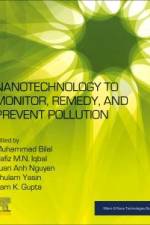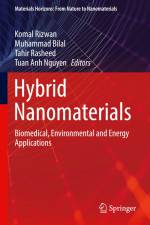av Muhammad Bilal
4 161
For decades an increasingly rapid urbanization pace, modern industrial development, and constantly intensive agricultural practices have caused controlled or uncontrolled release of hazardous contaminants that seriously threaten our environment. All natural spheres (atmosphere, hydrosphere, biosphere, lithosphere, and anthroposphere) seem to have been exposed to harmful practices and emerging research in nanomaterials is now trying to combat their adverse impact on physical ecosystems and organisms, as well as human health. In this context, pollution remediation at the nanoscale has come to the forefront for its potential to unlock sustainable, highly efficient, and cost-effective technologies, capable to restore in situ or ex situ land, water, and air resources. Nanotechnology to Monitor, Remedy, and Prevent Pollution covers design, fabrication, and extensive applications of engineered nanostructured materials in various shapes and morphologies (such as nanoparticles, wires, tubes, fibres) that, because of their size, surface-to-volume ratio, and high reactivity, function as catalysts and adsorbents of organic pollutants (aliphatic and aromatic hydrocarbons), gases, chemicals (arsenic, manganese, iron, nitrate, heavy metals), antibiotics, and biological entities (bacteria, viruses, parasites). Their integration with biotechnological processes for monitoring and prevention of pollution is also explored alongside the invisible dangers caused by noise. This is a valuable book for academics, researchers, undergraduate and postgraduate students working on environmental engineering for sustainability, environmental sciences, biotechnology, and nanotechnology.?




